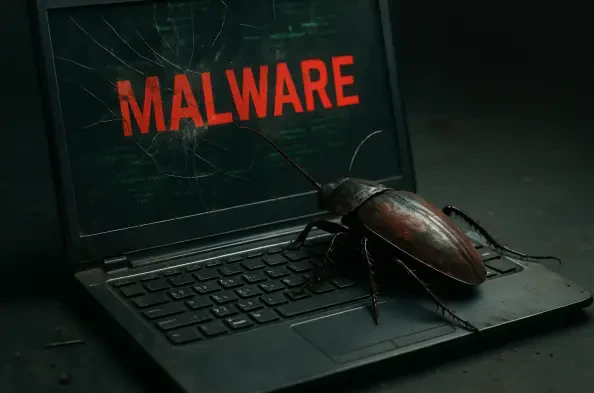In an era where digital gaming has become a cornerstone of entertainment for millions worldwide, a sinister threat has emerged that preys on the very tools gamers use to enhance their experience, putting players’ personal data and financial security at grave risk. Cybercriminals have increasingly turned to gaming mods and cheats as vehicles for delivering malicious software. This alarming trend has seen sophisticated malware, such as the notorious Trojan.Scavenger, infiltrate popular titles through seemingly harmless downloads. Disguised as performance boosts or gameplay advantages, these malicious files exploit the trust and enthusiasm of the gaming community. The consequences are dire, with stolen passwords, compromised crypto wallets, and breached privacy becoming all too common. As attackers refine their methods to bypass traditional security measures, understanding this evolving danger is crucial for anyone who engages with third-party gaming content.
Unveiling the Threat of Trojan.Scavenger
The rise of Trojan.Scavenger marks a chilling development in the world of cybercrime targeting gamers. This malware family often hides within ZIP archives that masquerade as legitimate mods or cheats for well-known games. Unsuspecting users download these files from unverified sources, believing they’re gaining a competitive edge, only to install a devastating payload. Once activated, typically through modified dynamic libraries placed in game directories, the trojan exploits weaknesses in library search priorities to load automatically when a game launches. It then establishes a covert connection to a command-and-control server, using encrypted communication to evade detection by most antivirus programs. The stealth and sophistication of this infection process make it a formidable threat, as it silently embeds itself into a user’s system. Gamers, often unaware of the intrusion until significant damage occurs, face the loss of sensitive data and digital assets in mere moments after installation.
Beyond its initial infiltration, Trojan.Scavenger demonstrates a terrifying versatility in its attack methods. After gaining a foothold, it deploys additional trojans that specifically target Chromium-based browsers such as Chrome, Edge, and Opera. These secondary payloads disable built-in security features, manipulate browser extensions, and extract critical information like mnemonic phrases, private keys, and passwords from applications including MetaMask, Exodus, Bitwarden, and LastPass. The stolen data is swiftly transmitted to attackers, often leading to substantial financial losses and irreparable breaches of personal security. This multi-layered approach underscores the malware’s ability to adapt and exploit a wide range of vulnerabilities, from gaming software to everyday browsing tools. The sheer scope of targeted applications reveals how deeply cybercriminals have studied the habits and dependencies of their victims, turning routine digital activities into opportunities for exploitation.
Exploitation of Trust in the Gaming Community
A significant factor fueling the success of malware like Trojan.Scavenger is the inherent trust within the gaming community. Players, eager to enhance their gameplay or gain an edge over competitors, frequently turn to third-party mods and cheats without fully considering the associated risks. This willingness to experiment with unofficial content creates a perfect storm for cybercriminals, who capitalize on the community’s enthusiasm by embedding malware in seemingly beneficial tools. Downloads from sketchy forums or torrent platforms often appear legitimate, complete with convincing descriptions and user endorsements, making it difficult for even cautious individuals to spot the danger. The exploitation of this trust highlights a broader vulnerability in niche online communities, where the desire for improvement or novelty can overshadow basic security practices, leaving users exposed to sophisticated threats.
Experts have issued stark warnings about the growing complexity of malware delivery tactics, emphasizing that traditional defenses are no longer sufficient. Antivirus software, while still essential, often struggles to detect the encrypted communications and dynamic behaviors of advanced trojans like Trojan.Scavenger. This reality places the burden on gamers to adopt more proactive measures, such as scrutinizing the sources of their downloads and being wary of offers that seem too good to be true. The culture of sharing and experimentation within gaming circles, while a source of innovation, has inadvertently opened doors to cybercrime on an unprecedented scale. Addressing this issue requires not just technical solutions but also a shift in mindset, where skepticism and caution become as integral to gaming as strategy and skill. Only through such vigilance can the community hope to mitigate the risks posed by malicious actors lurking behind the allure of enhanced gameplay.
Safeguarding Digital Playgrounds
Looking back, the emergence of Trojan.Scavenger served as a sobering reminder of the hidden dangers embedded in gaming mods and cheats. Cybercriminals had honed their tactics to exploit both technical vulnerabilities and human tendencies, targeting a demographic eager for competitive advantages. The devastating impact on privacy and financial security, through stolen data from crypto wallets and password managers, underscored the urgent need for stronger defenses. Reflecting on these incidents, it became clear that the gaming community had to adapt to an increasingly hostile digital landscape, where trust in third-party content could no longer be taken for granted.
Moving forward, actionable steps emerged as critical tools for protection. Gamers were encouraged to avoid downloads from unverified sources, ensuring files came from reputable platforms with verifiable digital signatures. Keeping antivirus software updated and restricting admin privileges on everyday accounts helped limit malware execution capabilities. Additionally, practicing cautious engagement on social media and double-checking file paths before installation added layers of safety. These measures, while simple, represented a powerful shift toward proactive security, empowering players to safeguard their digital playgrounds against the evolving threats of cybercrime.






